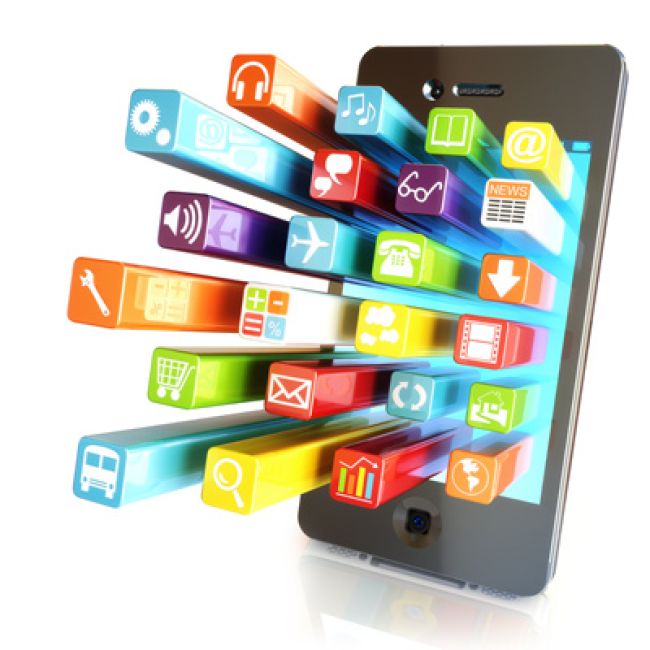
4 Smartphone Apps to Make You a More Effective and Efficient Fleet Manager
If you’re among the 64 percent of Americans who own a smartphone – up from 35 percent in 2011, according to Pew Research – you hold in your hand a powerful tool to record great ideas, facilitate collaboration, avoid traffic and make faster decisions, with thousands of apps available today.
The most obvious mobile apps discussed in fleet management circles are those associated with telematics providers to give you real-time access to fleet asset data on your smartphone. But beyond telematics, what other useful smartphone apps can help make your job easier and boost your productivity as a fleet manager? Try these four tools.
1. Evernote
URL: https://evernote.com
Cost: Free for basic plan
Think of Evernote as a virtual library of notebooks that you fill with important ideas, documents, emails, pictures or audio files – all in one place, accessible from any device.
For example, suppose you’ve found an interesting article and want to reference it later. With Evernote, you can clip the entire article or a part of it, place it in a note and access it anywhere from your smartphone, tablet or laptop. And if you don’t remember the name of the article, you can find it fast on Evernote by searching keywords.
Or, perhaps you’ve just finished a highly productive brainstorming session with your team and want to capture everything written on the whiteboard. Through the Evernote app, you can snap a picture of the whiteboard with your smartphone, and it’s automatically recorded on a note and organized in the notebook of your choosing, which you can easily share with others on the team.
2. Audible
URL: www.audible.com
Cost: $14.95 monthly subscription (for one new book each month)
How can you make the most of your “windshield time” while commuting to work or driving to your utility’s other locations?
With Audible, an Amazon company, you can invest that time in professional development by listening to books on your smartphone wherever you go. As of press time, Audible has more than 180,000 titles available, with top-sellers such as:
• “Smarter Faster Better: The Secrets of Being Productive in Life and Business” by Charles Duhigg
• “Start with Why: How Great Leaders Inspire Everyone to Take Action” by Simon Sinek
• “The Inevitable: Understanding the 12 Technological Forces that Will Shape Our Future” by Kevin Kelly
You can also listen to “The Great Courses” series that includes college-style lectures from top teachers in the world on a wide range of subjects. A few courses that might interest you include:
• Seth Freeman’s “The Art of Negotiating the Best Deal”
• Michael A. Roberto’s “Transformational Leadership: How Leaders Change Teams, Companies, and Organizations” and “The Art of Critical Decision Making”
• Kenneth G. Brown’s “Influence: Mastering Life’s Most Powerful Skill”
3. Google Drive
URL: www.google.com/drive
Cost: Free for 15 GB
With Google Drive and its full suite of office applications – including Google Docs, Sheets and Slides – you can work on important documents on any internet-connected device and then instantly share your changes to authorized members of your team.
For example, suppose you’re working on a fleet policy that requires collaboration with multiple stakeholders, but the back-and-forth exchange of emails starts to get unwieldy. With Google Drive, your team can edit the document together in real time, no matter where each person is located or what device they’re using. And then, when you’re done, you can convert the final document into popular formats for distribution, such as PDF, Word, Excel and PowerPoint. This way, you can remove the typical bottlenecks that slow down the production and approval cycles for important projects.
4. Waze
URL: www.waze.com
Cost: Free
Has your navigation system ever failed to alert you about a traffic jam before you got stuck in it? What if someone could have given you a heads-up that an accident occurred about a half-mile up the road – within seconds after the incident – so you could have rerouted in time to avoid delays?
That’s precisely what makes Waze a different smartphone navigation app. It takes GPS navigation a step further by empowering its users to update actual road conditions in real time for the benefit of all its users, issuing alerts before you approach red light cameras, police, accidents, road hazards or traffic jams. Waze can also guide you to the cheapest fueling station on your route.
So, when you’re looking for the shortest and safest route to your destination, Waze – and its community of users – will help show you the way.
*****
Smartphone Stats on Transportation Apps
• 67 percent of smartphone owners use their phone at least occasionally for turn-by-turn navigation while driving; 31 percent say they do this frequently.
• 25 percent use their phone at least occasionally to get public transit information; 10 percent do this frequently.
• 11 percent use their phone at least occasionally to reserve a taxi or car service like Uber or Lyft. Just 4 percent do so frequently, and 72 percent of smartphone owners never use their phone for this purpose.
Source: Pew Research

